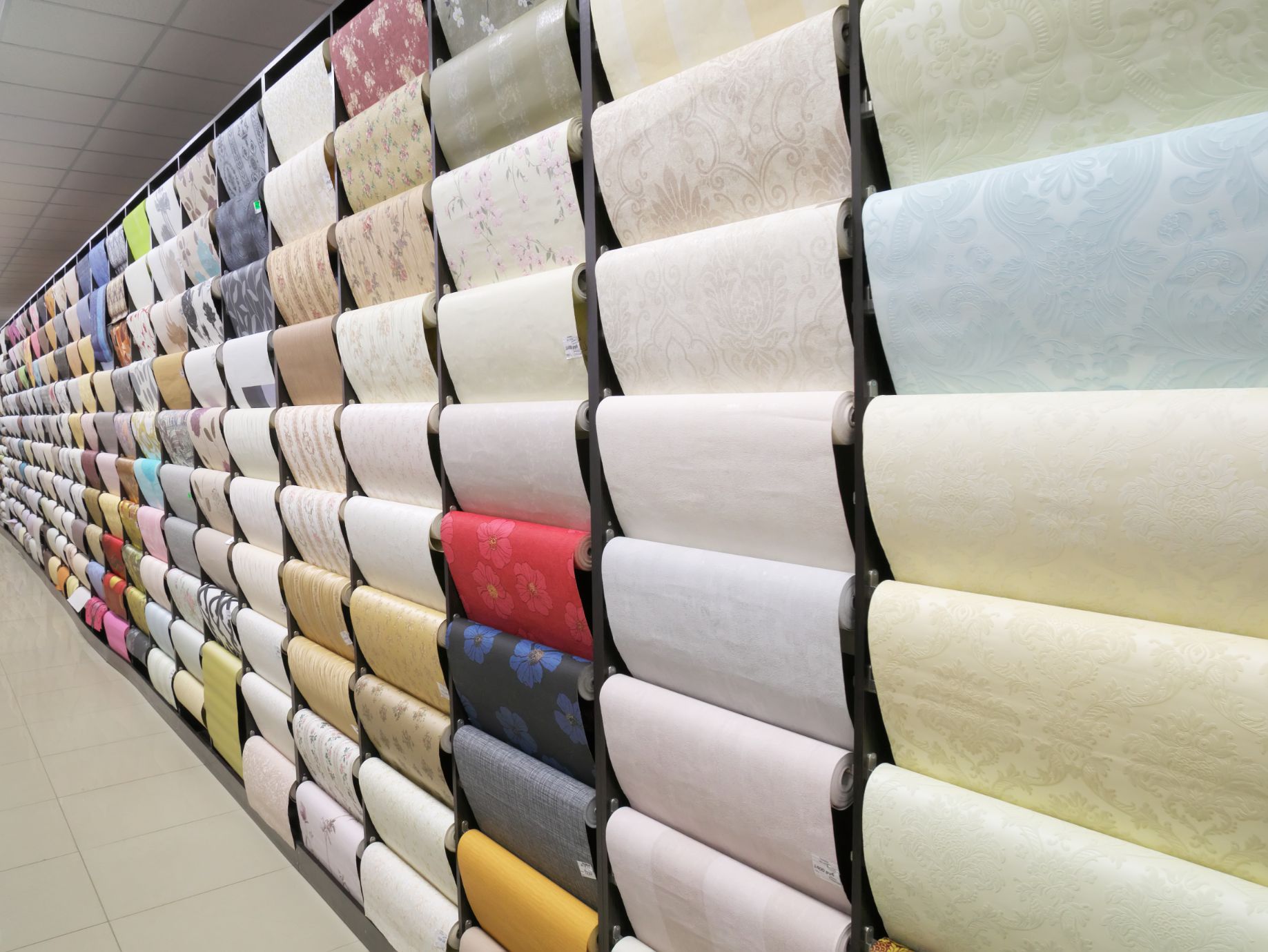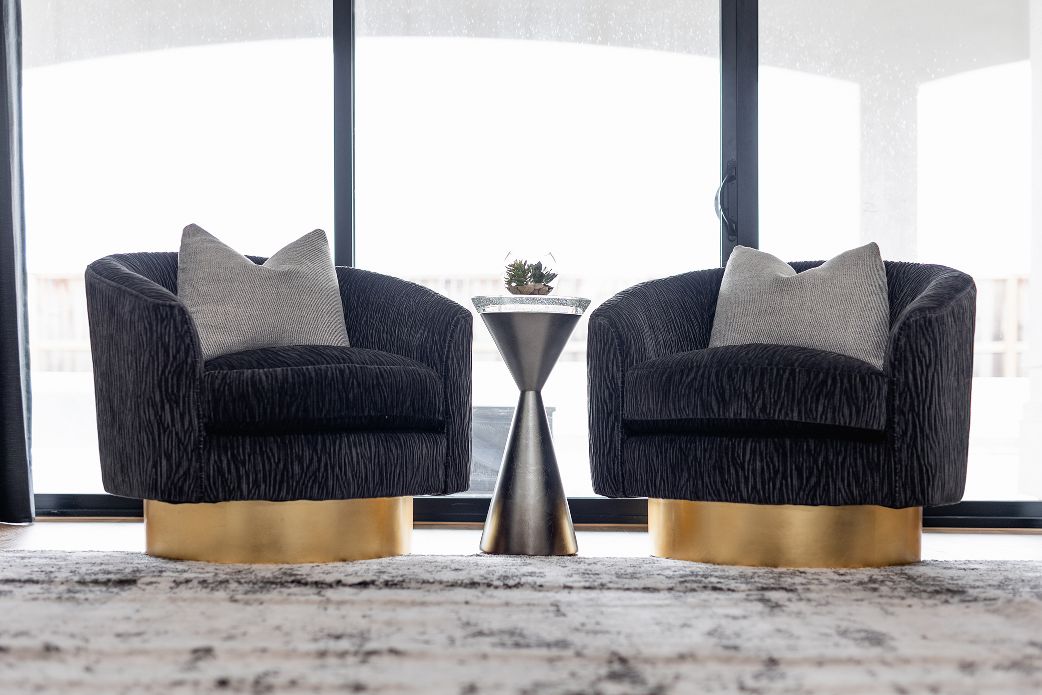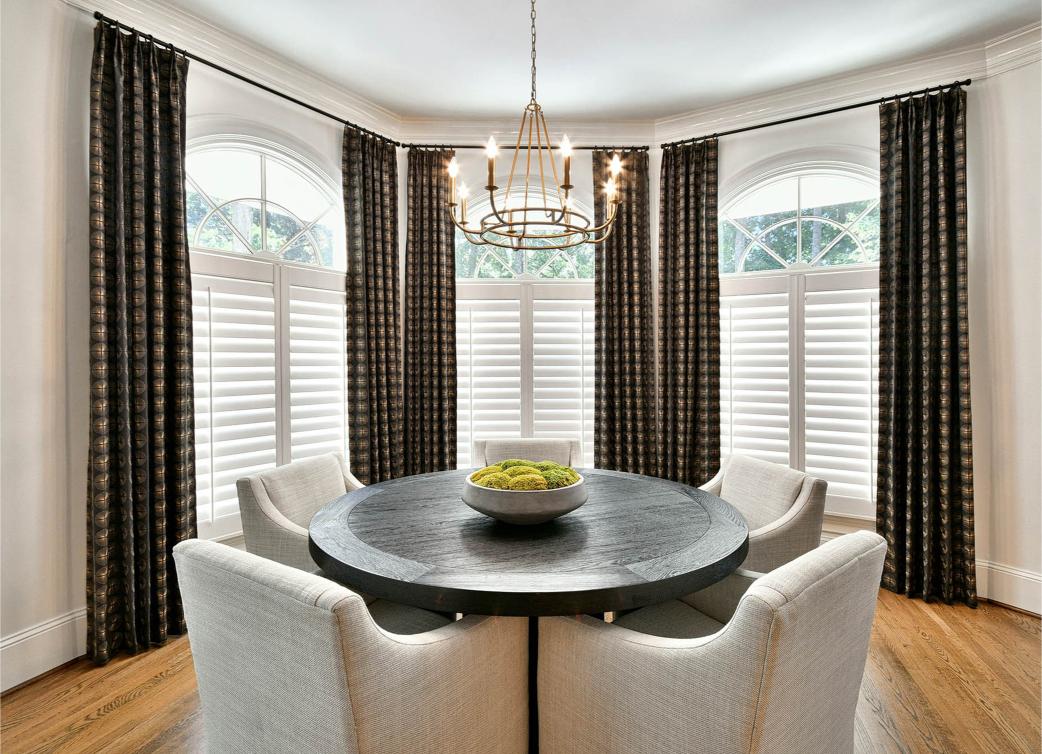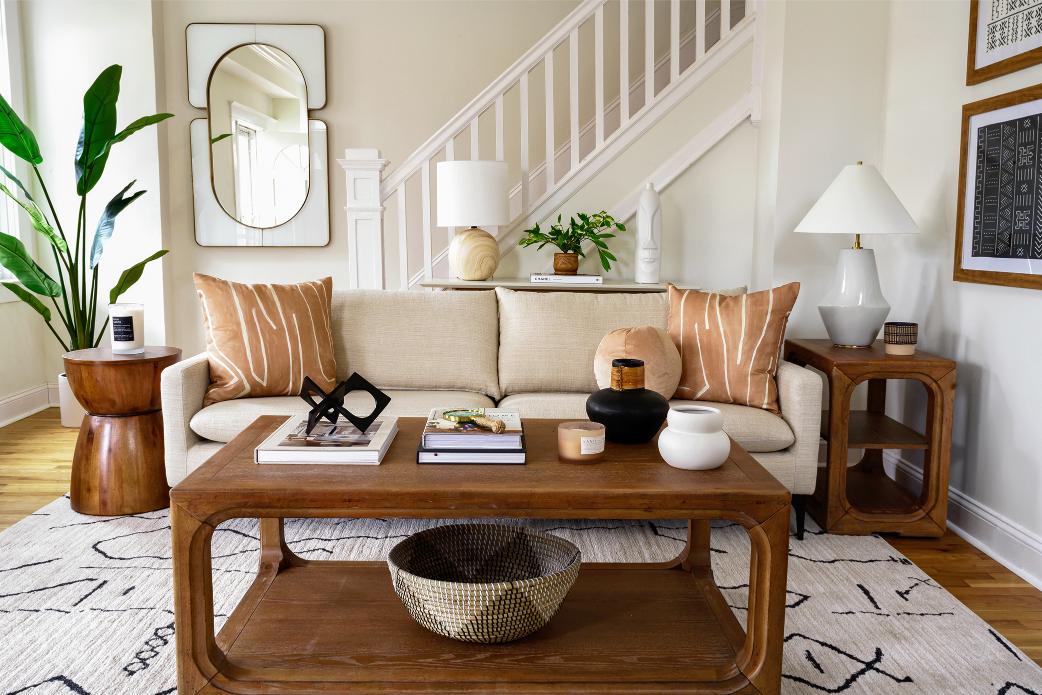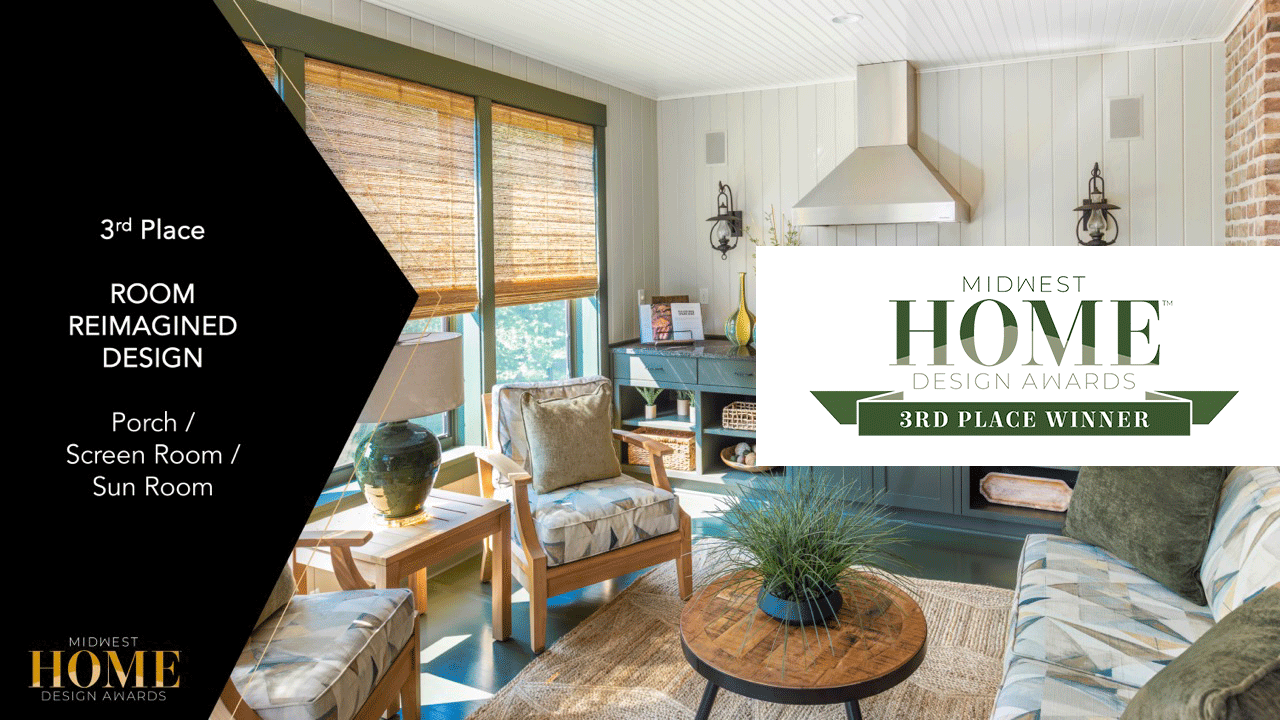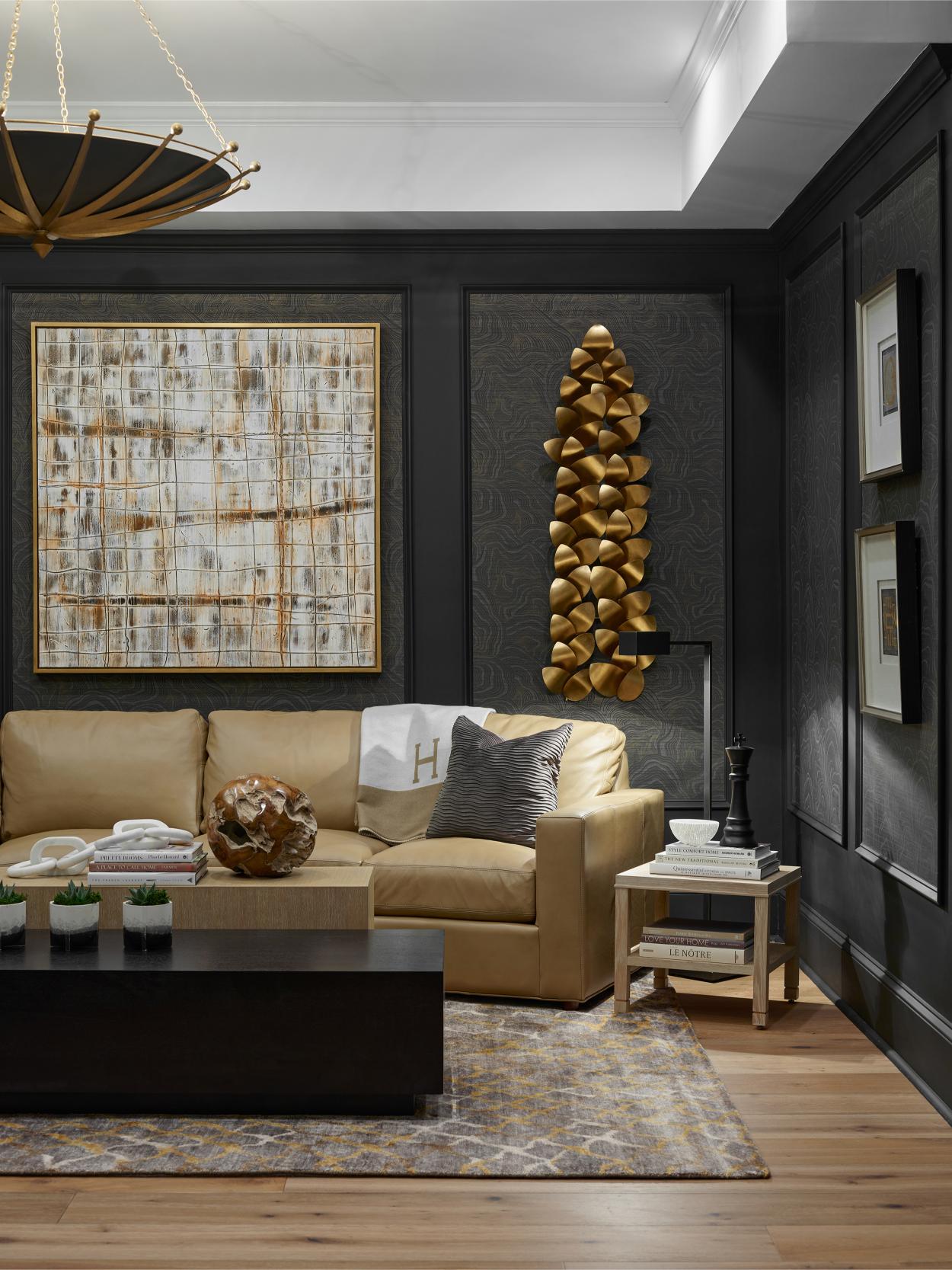Upon entering a well-designed room, one instantly senses the harmony of carefully thought-out remodeling, as if every detail whispers its place in the symphony of the home. April showers not only bring May flowers but also herald the annual occasion for homeowners to revitalize areas like the bathroom and family room, during National Home Improvement Month.
Maximizing Space with Smart Design
In celebrating National Home Improvement Month, a keen focus is often laid on the judicious use of space through intelligent interior design and remodeling projects executed by professional contractors. Spatial optimization is, after all, a crucial aspect of home improvement. Achieving a balance between aesthetics and functionality can transform a cramped area into an inviting, multipurpose haven. Thoughtful furniture selection and strategic placement, combined with innovative storage solutions, can amplify the utility and appeal of even the most compact of spaces, rendering them both luxurious and life-enhancing.
Multi-functional Furniture for Efficiency
Maximizing space requires creativity—multi-functional furniture is the linchpin in establishing an efficient and streamlined interior environment.
In a compact living space, a single piece of furniture can fulfill multiple roles, enhancing functionality without compromising on style.
~ Gina Wolleat, Interior Designer
By opting for pieces that serve dual purposes—such as a sleeper sofa or a bookshelf with a fold-down desk—homeowners (and guests) can enjoy greater freedom and utility within their living spaces, aligning form with practical need.
These versatile solutions not only save space—they also introduce an element of smart design that supports a sleek, uncluttered aesthetic while responding to the demands of modern living.
Innovative Storage Solutions
In an era where square footage is premium, innovative storage solutions are key to uncluttered living.
- Built-in Shelves and Nooks: Utilize vertical space effectively by installing custom shelves into walls, under staircases, and in otherwise untapped areas.
- Multi-tiered Furniture: Look for coffee tables, ottomans, and beds with built-in drawers or shelves, marrying form with an essential function.
- Magnetic Wall Strips: A sleek way to store kitchen knives, tools, or even office supplies, magnetic strips make for easy access and save drawer space.
- Ceiling-mounted Racks: Suspend bikes, pots, or seasonal decor above, freeing up valuable floor real estate.
- Hidden Compartments: Furniture with hidden storage spaces can keep seldom-used items out of sight but within reach when needed. Streamlined organization enhances the aesthetic charm of interior design.
Sophisticated storage solutions, especially in the bathroom, foster harmony by balancing the beauty and utility of every home space.
To ensure a home keeps up with the evolving needs of its inhabitants, considering timely upgrades is essential during National Home Improvement Month. Strategic renovations or updates can significantly enhance both the functionality and aesthetics of a home. Whether it’s installing smart home technology, upgrading appliances for increased energy efficiency, or giving rooms a fresh coat of paint, these improvements can breathe new life into a residence. More than mere modifications, upgrades represent forward-thinking changes that sustain a home’s relevance and livability for years to come.
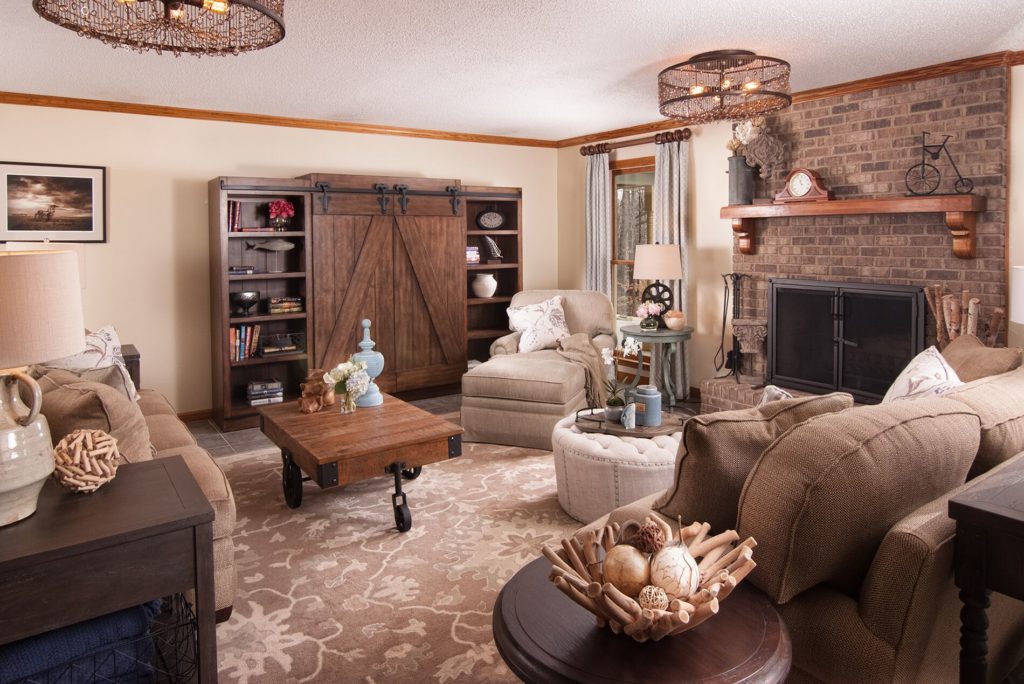
Color Theory in Practice
Selecting the optimal color palette is pivotal for creating the desired ambiance in your home, including the tranquility often sought in bathroom decor. Colors influence mood, perspective, and even perceived temperature, guiding the eye through space and establishing visual continuity. Thoughtful consideration of hue, saturation, and brightness is necessary to evoke the intended emotional and physiological responses.
Color harmony fosters a cohesive look, seamlessly integrating rooms and decor elements. By understanding the relationships between colors on the spectrum, one can craft environments that are both aesthetically pleasing and psychologically comforting, turning a mere dwelling into a serene sanctuary.
Choosing a Cohesive Palette
Selecting a harmonious color palette is essential for creating visual flow and balance within interiors.
- Evaluate the room’s natural light and how it affects color perception.
- Contemplate the mood you wish to evoke in each space.
- Consider the architectural style and period of your home.
- Choose a dominant color as a foundation for your palette.
- Include neutral tones to provide visual rests and enhance versatility.
- Incorporate varying shades and textures to add depth and interest.
A cohesive palette unites disparate elements and promotes a seamless experience as one transitions through the home. Carefully curated hues can transform a house into a cohesive and tranquil haven.
Accent Hues for Vibrant Interiors
Incorporating accent hues is a strategic approach to invigorating a home’s interior with bursts of color, creating focal points, and enriching the overall design narrative. These vivid spots of color can elevate spaces from the ordinary to the extraordinary, crafting visually dynamic and inviting environments.
Select accents that harmoniously interact with your base colors to avoid visual clash. This synergy should enhance, not overwhelm, the existing decor. Boldly painted walls or vibrant accessories add a layer of excitement to any room, especially when coordinated with subtler tones for balance. Striking the right mix is key to a sophisticated ambiance.
Carefully chosen accent pieces, such as throw pillows, artwork, or rugs can introduce a dash of color without committing to larger, more permanent changes. These elements afford an opportunity for seasonal updates or trend experimentation.
Experiment with different textures and materials in your accent hues to add tactile variety and visual interest. Layering with textures ensures that the vibrancy does not overpower but rather complements the room’s architecture and furnishings.
Ultimately, it’s the subtleties in a room’s accent hues that can make an impactful statement. Thoughtfully integrated splashes of color contribute to a space that feels both lively and harmoniously composed.
Sustainable Decorating Choices
Incorporating sustainably sourced materials and eco-friendly decor can markedly reduce your home’s environmental footprint. Options like reclaimed wood, vintage furnishings, and plant-based fabrics not only manifest a commitment to ecological responsibility but also introduce a narrative of conservation into your living space.
These environmentally conscious choices often yield a unique aesthetic that’s both timeless and personal. By selecting items with a history or those made from renewable resources, homeowners craft spaces that are not only beautiful but also align with a more sustainable lifestyle.
Eco-friendly Materials
Eco-friendly materials serve as a cornerstone for responsible interior design, reflecting a deep respect for the environment while enhancing a home’s ambiance. These materials not only resonate with an ethically sound choice but also offer robust longevity and timeless appeal.
Natural, renewable materials like bamboo and cork make aesthetically pleasing, durable alternatives. They exemplify the intersection of sustainability and design, providing an elegant yet eco-conscious backdrop for any interior space.
Innovative recycled materials are gaining prevalence, turning what was once waste into coveted decorative elements. Products such as recycled glass countertops or repurposed textile rugs set a distinguished tone, marrying sophistication with environmental stewardship.
The incorporation of low-VOC (Volatile Organic Compounds) paints and finishes exhibits a pivotal shift toward health-conscious and eco-friendly living spaces. In choosing these elements, homeowners are not only attentive to visual appeal but also to the air quality and ecological impact of their surroundings. Beyond aesthetics, these choices represent “smart” home improvements that contribute to a healthier and more sustainable future.
Biolithic Design: Blending Nature and Architecture
Biolithic design is a growing trend in the world of interior design, offering a unique approach that seamlessly blends nature and architecture. This innovative design concept incorporates natural elements, such as living walls, green roofs, and indoor gardens, into the structure of a home.
By integrating biophilic design principles, homeowners can create spaces that not only look beautiful but also promote health and well-being. Studies have shown that exposure to nature and natural materials can reduce stress, improve cognitive function, and enhance overall happiness.
Incorporating biolithic design elements into your home can be as simple as adding potted plants or as elaborate as installing a living wall. The possibilities are endless, and the benefits are numerous. Not only will your home become a sanctuary of tranquility, but it will also contribute to a more sustainable and eco-friendly living environment.
So, if you’re looking to enhance your home during National Home Improvement Month, consider incorporating biolithic design elements. Not only will you be creating a visually stunning space, but you’ll also be embracing a design philosophy that connects us to the natural world and promotes a healthier lifestyle.
Upcycling Vintage Finds
Transforming the old into new is an art that marries creativity with sustainability. Embracing vintage finds provides a unique opportunity to inject personality and historic charm into modern living spaces.
The practice allows homeowners to express their individuality while honoring the past. By repurposing antiques into functional pieces, such as turning an old door into a table or retrofitting a vintage suitcase into shelving, one crafts a narrative that fuses history with contemporary life. These revitalized items carry a patina of time, adding depth and character to any room’s decor. Furthermore, upcycling mitigates waste, spotlighting environmental consciousness within the realm of interior design.
Upcycled pieces introduce a singular aesthetic that cannot be replicated with new items. As each vintage find holds its own backstory, integrating these into a home can create conversational centerpieces. This approach not only furnishes a space with distinctive flair but also conserves resources and extends the lifecycle of well-crafted objects.
In essence, upcycling vintage finds exemplifies resourcefulness and imagination in design. It allows for a personal touch in décor while serving as an environmentally responsible choice. This home improvement month, consider the myriad of possibilities upcycling offers—adding storied elegance to your home, reducing waste, and crafting a unique environment that resonates with the essence of past eras.
Lighting Concepts for Ambiance
The translation of ambiance through lighting cannot be understated in interior design. Strategic illumination is pivotal in crafting an atmosphere that both soothes and inspires. Consider the layering of light to achieve a harmonious balance throughout a space – from the warmth of dimmable LED downlights to the focused glow of task lamps and the suggestive twinkle of accent lighting. The intricacies involved in selecting the appropriate light temperature, intensity, and placement have the remarkable capacity to alter the mood and functionality of any room, sculpting spaces with light and shadow.

Layered Lighting Techniques
Illuminate elegantly with strategic light placement. Layering different forms of lighting is an art in itself. This crucial aspect of interior design ensures a versatile and beaconed atmosphere. Ambient, task, and accent lighting each serve distinct functions, and when harmoniously integrated, can transform a mundane space into an oasis of comfort. Ideally, one should seek to create a symphony of lights that enhances both utility and aesthetics, guiding the eyes subtly throughout the room.
Illuminate work surfaces without shadows or glares. Ambient light provides a canvas – think ceiling-mounted fixtures. Task lighting is crucial too, focusing on work areas – such as under-cabinet lights in kitchens or study lamps. It’s the spotlight that guides you during tasks, ensuring efficiency and precision. As part of a layered approach, it punctuates the ambient light, offering clarity where it’s most required.
Accent lighting is the final touch, sculpting the space. Accents act as the brushstroke that highlights and showcases key features within a room—like artworks, bookcases, or architectural elements. Strategically placed, this layer of lighting adds depth and dimension to a space, making it feel complete. It draws the eye to the aesthetics of a room, punctuating spaces with visual interest and depth.
Smart Bulbs and Controls
Smart bulbs are vital for a nuanced interior lighting plan, offering flexibility, convenience, and a variety of lighting possibilities. They adapt seamlessly to the desired ambiance, switching from a cozy warm glow for evenings to a bright, energizing daylight simulation for work hours.
They’re effortlessly integrated into smart home systems, allowing for remote control and scheduling. With just a few taps on a smartphone, one can orchestrate a perfect lighting scenario.
Furthermore, advanced features such as color temperature adjustment (from warm to cool hues) and dimming capabilities enable precision in lighting moods. Seamless integration with voice assistants like Amazon Alexa or Google Assistant facilitates an effortless command of the lighting landscape.
Smart controls extend beyond simple on and off switches, coming with features designed for energy conservation without compromising convenience. Motion sensors ensure lights only activate when needed, while dimmers allow for adjusting light levels to match the time of day and activity.
Many smart systems also include geofencing technology to automatically turn lights on as you arrive home, ensuring a welcoming atmosphere every time. These intelligent solutions not only enhance comfort but also contribute to energy savings by reducing unnecessary power usage.
Adopting smart bulbs and controls is more than just a convenience – it is a strategic component in achieving the optimal lighting design. Such technology allows for a personalized experience that resonates with the homeowner’s lifestyle, truly transforming the space into a responsive habitat.
Re-Design Your Home with Gina Wolleat
In conclusion, if you’re ready to embark on a journey of transforming your home into a space that reflects your unique style and personality, look no further than Interior Designer, Gina Wolleat, at Room Reimagined Design. With expertise and attention to detail during National Home Improvement Month, Gina can help you bring your vision to life and create a home that is both functional and visually stunning. Whether you’re looking to incorporate eco-friendly materials, embrace biolithic design, or simply refresh your space, Gina’s passion for interior design will ensure that every aspect of your home is carefully curated and thoughtfully executed. So, make the most of National Home Improvement Month and take the first step towards a beautifully redesigned home with Gina Wolleat and Room Reimagined Design.




